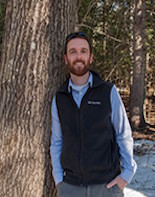Junior Faculty Award
Established by the New England Botanical Society in 2019, the Junior Faculty Award supports the developing research programs of early career academic faculty with work focused on botanical, ecological, biogeographical, genetic, or systematic aspects of plants in the New England flora. Early career candidates are those who are in their first 5 years as a new academic member at a post-secondary teaching institution in New England, who are teaching botanically related courses, and who are establishing or expanding a research program. For the purposes of this award, “botanical” study systems can include vascular plants, non-vascular plants, algae, fungi, and lichens.
Applicants do not need to be a member of our organization to apply for this award.
The objective of NEBS in offering the Junior Faculty Award is to support new members of the academic community in New England and to encourage innovative botanical research on the flora of the region. The award grants are intended to support research, including botanical surveys and studies, ecological experiments in field or greenhouse settings, molecular and phylogenetic lab work, applied and conservation-oriented research, and herbarium-based studies, or similar projects. This research may be newly proposed or in the early stages of implementation. Please note that this award may not be given every year, but only in years where applicants meet all the eligibility requirements.

2025
Dr. Chloe Pak Drummond, Clare Boothe Luce Assistant Professor, Department of Biological Sciences, Mount Holyoke College, South Hadley, Massachusetts
“Population history, genetic diversity, and future persistence of Large-leaved Sandwort, Moehringia macrophylla (Hook.) Fenzl (Caryophyllaceae), a rare New England plant.”
Abstract: Large-leaved sandwort, Moehringia macrophylla (Hook.) Fenzl, is a low-growing perennial rhizomatous herb that reproduces vegetatively and produces seeds that are ant dispersed. Large-leaved sandwort has a disjunct, or discontinuous, geographic range across North America and is rare and endangered in New England. The New England populations occur on rock outcrops, cliffs, ledges, and talus slopes that maintain cold temperature during the summer. They are hypothesized to be Pleistocene glacial relicts, persisting in the only suitable remnant habitats that were left behind as the ice retreated. If the New England populations are glacial relicts with limited dispersal and an uncommon habitat, they may not be able to track climate change and move northward, and the ability to adapt in place becomes important. However, the adaptive potential of the New England populations might be limited by reduced gene flow because of their isolation from each other and neighboring populations to the north and west. Our work aims to illuminate the factors that influence the persistence of large-leaved sandwort in New England using a combination of field work, species distribution modeling, and genetic analysis. Undergraduates at Mount Holyoke College will first assess the impact of climate change on potential habitat by creating a species distribution model and projecting it to the present and future under different climate scenarios, quantifying shifts in potential habitat location. Students will also assess whether the New England populations are glacial relicts or the result of more recent dispersal by inferring a time-calibrated phylogeny, and this may shed light on future dispersal potential. Finally, to understand large-leaved sandwort’s adaptive potential in New England, students will estimate gene flow between populations by looking at genetic structure and genetic diversity within and among populations. Overall, this work addresses the long-term persistence of the rare and endangered large-leaved sandwort in New England.

2024
Dr. Brook T. Moyers, Assistant Professor of Biology, Department of Biology, University of Massachusetts-Boston, Boston, Massachusetts
“Local adaptation to metal contamination in Salicornia depressa and its rhizosphere.”
Abstract: Coastal environments buffer between land and sea and provide essential habitat to many species but are often contaminated through human activities. Toxic metals have been released into New England coastal sediment by human activity since the 1800s and have long persistence in sediment. We are studying how the salt tolerant plant Salicornia depressa and its root-associated microbes (rhizosphere) have adapted to metal contamination in New England salt marshes. Salicornia or pickleweeds are well-established hyperaccumulators of metals, primarily stabilizing them in plant tissue and forming beneficial relationships with rhizosphere microbial partners that are shaped by environmental stressors like metals. Most research on metal tolerance and microbial partners in Salicornia has focused on European species and little is known about our native species. We will collect seeds from six marshes that span from pristine to highly contaminated and experimentally test whether S. depressa populations are adapted to local metal concentrations and soil microbial communities using a reciprocal common garden. We predict that S. depressa plants from highly contaminated marshes will perform best under our metal contamination treatment, and that this will be enhanced by soil microbes from highly contaminated marshes. Our work will inform the fundamental question of how the environment shapes species and their ecological communities.

2021
Dr. Kirsten K. Coe, Assistant Professor of Biology, Department of Biology, Middlebury College, Middlebury, Vermont
“Quantifying moss-associated nitrogen fixation in New England peatlands.” Report
Abstract: Nitrogen (N) limits productivity across terrestrial ecosystems, and the primary way in which N enters the biosphere is through fixation via diazotrophic organisms, such as cyanobacteria. In some ecosystems, mosses can form symbiotic associations with N-fixing cyanobacteria, and moss-associated N fixation can represent a critical N source to communities. While such associations have been demonstrated in arctic and boreal ecosystems, considerably less attention has been paid to temperate systems. This is despite the ecological importance of mosses in systems, such as temperate peatlands. The goal of this project was to examine the magnitude and drivers of moss-associated N fixation in New England peatlands. We conducted Sphagnum (peat moss) field incubations in three bogs spanning a latitudinal gradient from Western MA to Northern VT, using ¹⁵N₂ tracers coupled with modeling of biotic and abiotic predictor variables for N fixation. We also applied UV fluorescence microscopy in paired field-collected specimens to concomitantly examine cyanobacterial abundance as a spatial and temporal predictor of N fixation. Two undergraduate students under the mentorship of principal investigator Coe conducted field incubations, microscopy, species identification, and analyses of stable isotope data, as well as analyses using NOAA-derived remote sensing predictors of N fixation. Overall, we document widespread evidence of moss-associated N fixation across our sites, where N fixation rates were, on average, greater than what has been reported in boreal and arctic regions. We also identified six Sphagnum species that associated with N-fixing cyanobacteria and discovered that cyanobacterial symbionts may migrate within individual shoots throughout the growing season. Environmental variables captured across sites, such as recent temperatures and longer-term precipitation, were strong predictors of N fixation rates.

2020
Dr. Jay Wason III, Assistant Professor of Forest Ecosystem Physiology, University of Maine, School of Forest Resources, Orono, Maine
“Drought timing impacts on chlorophyll content and photosynthesis in New England trees.” Report.
Abstract: Despite predictions for increased annual precipitation in New England, warming temperatures and variability in the timing and amount of rainfall in individual events is expected to lead to more extreme droughts. However, most native forest trees in New England rarely experience drought and therefore may not be well adapted to future conditions. The goal of this research is to determine how droughts occurring at different times of year will impact the growth, survival, and physiology of native tree saplings. The DroughtTIME study (Drought Timing Impacts in Maine) at the University of Maine includes 288 saplings of Betula papyrifera, Acer rubrum, Prunus serotina, Thuja occidentalis, Pinus strobus, and Juniperus virginiana. Each sapling is individually irrigated to simulate one of four treatments: no drought, spring drought, summer drought, or late-summer drought. Throughout each drought, graduate and undergraduate students will track height and diameter growth, soil moisture, plant hydration, leaf chlorophyll content, and leaf photosynthetic efficiency. With these data we will determine how the timing of drought drives declines in plant hydration and relate that directly to leaf physiology, growth, and survival to better understand how New England forest trees may respond to future climate conditions.

2019
Dr. Diana Jolles Assistant Professor of Botany and Director, Plymouth State University Herbarium (PSH), Dept. of Biological Sciences, Plymouth State University, Plymouth, New Hampshire
“Reproductive biology and lineage diversification in the Pink Lady’s Slipper, Cypripedium acaule Ait. (Orchidaceae).”
Abstract: The Pink Lady’s Slipper, Cypripedium acaule Aiton, is an iconic forest species both in New England and throughout the greater Eastern Mixed Forest. Several forms varying primarily in perianth coloration exist, including C. acaule forma albiflora E.L. Rand & Redfield, a taxon described from Mount Desert Island in 1894. Students at Plymouth State University are involved in fieldwork across the geographic range of C. acaule to record color variation, insect visitation, and pollinium removal rates, and are conducting lab work to determine whether color variation has genetic underpinnings. In conducting this research, we hope to determine whether multiple, distinct lineages of C. acaule exist, either as geographic races that are geographically (and reproductively) isolated from each other or color morphs, subject to selection by pollinating insects. Cypripedium acaule is quite common in many forests throughout its range, especially in New England, but there are areas like Illinois and Virginia where populations are declining. Quantifying the genetic diversity of C. acaule will provide much-needed context for understanding adaptation and ecological requirements of the species. The proposed studies will serve as a model for engaging undergraduate researchers in conservation biology research and natural history studies, and that it will provide them with the hands-on experience they need to link evolutionary processes with natural resource management.
Application Instructions
Project Requirements: The research must advance our knowledge of plants that occur in the New England flora. Studies with research taking place primarily at New England study sites and/or using plant material from New England populations or herbaria will be favored. Projects that include opportunities for mentoring undergraduate or graduate students will also be viewed favorably. Notably, while the project proposed might represent the first stage of longer-term efforts in a study system, the proposed work should result in a complete project, experiment, or study within one year of the award.
Types of Expenses Eligible for Support: Costs associated with conducting field, lab, greenhouse, and/or herbarium-based research are eligible for funding. Travel and lodging expenses associated with the research are also eligible, as are supplies and equipment associated with the proposed work. Modest stipends to support student involvement in projects will also be considered.
Eligibility: The Junior Faculty Award is open to early career faculty members within the first five years of their employment at the college or university where they are based in the New England region. Applicants should have completed graduate training (typically Ph.D.) in a plant-related field of biology and have a record of academic achievement (e.g., peer-reviewed publication).
Amount of Award: Applicants may request up to $5,000, but a full budget for a project must be included. If total costs exceed $5,000, indicate other sources of funding available to or being sought by the applicant to ensure project launch and feasibility in the coming year.
How to Apply: Please submit a proposal describing the research to be conducted, which includes:
- Title page with proposal title, applicant’s name, academic address, phone, and e-mail address.
- Body of the proposal of no more than three pages text (For a proposal to be successful, the topic and research questions must be clearly described, the methods justified, and the results achievable within defined time limits.)
- List of literature citations relevant to the project
- Itemized budget, including brief justification for each item
- Timeline for completion of the proposed work (typically 1 year, although research hinging on growing season access to study sites or focal species will be considered for ~1.5 year timeline over two summers)
- Deliverables including plans for disseminating results more broadly
- Curriculum vitae
The application period opens on December 1 and closes on February 1. Applicants will be notified as to the success of their proposals by March 1.
Upon accepting the award, recipients are required to submit an abstract describing the planned research in MS Word format for posting on the NEBS website. A final report, including an updated abstract, is required at the completion of the project on the date specified in the award letter.
Please submit your complete proposal via email to the Junior Faculty Award committee at: JuniorFacultyAward@rhodora.org. The complete application should be sent as an email attachment, preferably in PDF format.
If you have questions regarding eligibility, budget, and scope, please email JuniorFacultyAward@rhodora.org.
PLEASE NOTE: Winners of awards amounting to $600 or more will be required to submit IRS Form W-9 Request for Taxpayer Identification Number (provided by our treasurer) before award checks will be issued. In these cases a Form 1099 will be issued the following January to the recipient reporting the amount as an award (as required by law). Awards will ONLY be paid to the award recipients and NOT to any third party (such as colleges, universities, research institutions, employers, family members, etc.). For winners who are not United States residents, nonrefundable tax withholding of 30% will generally apply unless reduced or exempted by tax treaty.
